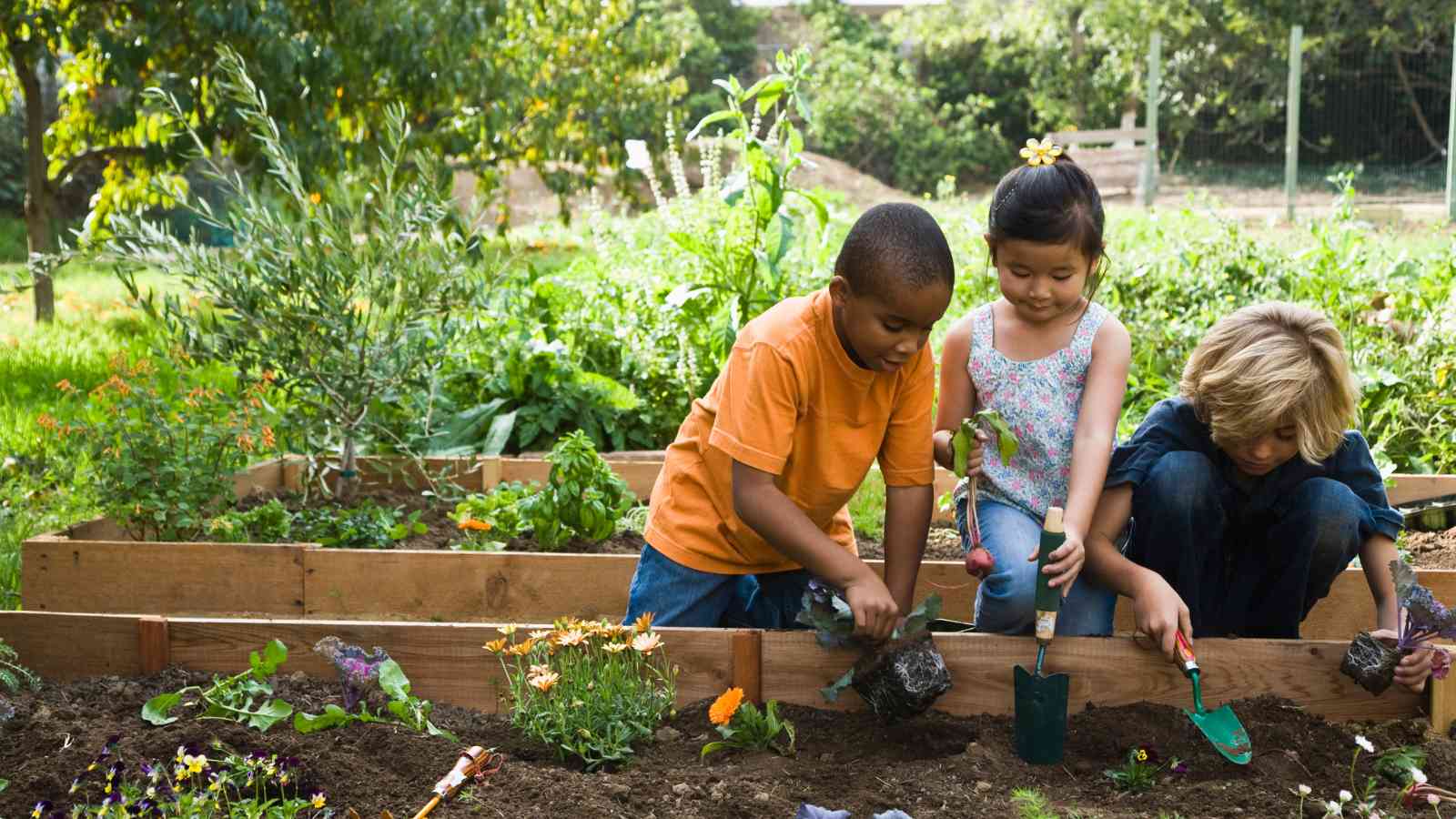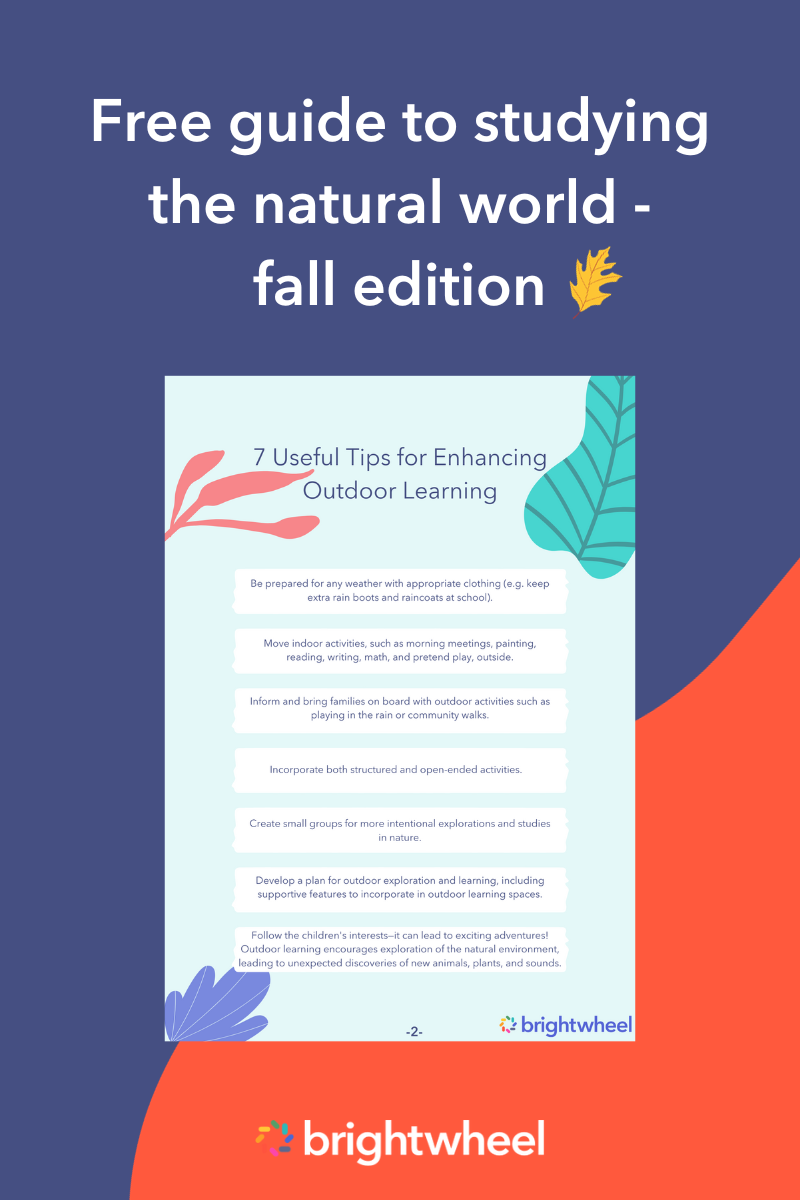
In a world increasingly dominated by screens and indoor play, it is important for children to reconnect with nature on a regular basis. Preschool is a critical time for young minds to explore and develop their understanding of the world around them. That's why incorporating gardening activities into your preschool curriculum can have a profound impact on a child's holistic development.
From fostering a love for the environment to promoting physical, cognitive, and social-emotional growth, the benefits of gardening are bountiful. In this article, we will explore the undeniable importance of introducing outdoor play and gardening activities into preschool education and creative activities you can use to inspire the children in your classroom.
What is outdoor play?
Outdoor play gives children the opportunity to discover, explore, and learn about the outside environment. Allowing children to play outdoors gives them the freedom and space to run, climb, jump, and express themselves with messy activities and loud voices, which is crucial to their growth and development. Outdoor play also fulfills a child’s needs for exploration, risk-taking, and experimentation.
Some engaging outdoor activities for preschoolers include scavenger hunts, birdwatching, outdoor dramatic play, and creating art with items found in nature. With careful planning, you can find ways to make outdoor play happen with appropriate activities for each season. So, whether it’s sunny, rainy, or snowy (except for extreme cases), children can play and learn outdoors.
Why is outdoor play important?
In today’s world, children are spending more time on screens and less time outside. While there are educational digital programs, too much time on the screen can negatively affect a child's development physically, socially, emotionally, and mentally. Therefore, it's essential to carve out some outdoor play for preschoolers.
Besides reduced screen time, there are other benefits of outdoor play.
- Physical health: Outdoor play directly impacts a child's physical development. It helps improve muscle strength, lower body mass index, advance motor skills, and boost general health.
- Social development: Playing outdoors increases opportunities to interact with other children and build relationships. As a result, they gain communication skills, better friendships, self-awareness, and appreciation for the environment.
- Emotional development: Children who play outside are stronger emotionally compared to children who spend most of their time indoors. This is because outdoor play gives children time to self-reflect, gain independence, build their resilience, and also provides an opportunity to use all their senses.
- Intellectual development: Outdoor play aids a child's intellectual development by boosting brain development, expanding learning space, improving interpersonal skills, and sparking an interest in new things.
Gardening activities for preschoolers
Incorporating gardening activities in your lesson plans can be an opportunity to create engaging, hands-on exploration, sensory experiences, and problem-solving moments for your children. Here are some easy and creative gardening activities for preschoolers.
1. Scarecrows
This is a good activity for preschoolers who are just beginning to learn about gardening. Use this scarecrow activity to explain the role scarecrows play in a garden and get children involved in the design process by utilizing clothes and materials you already have.
2. Eggshell gardens
This is a fantastic way of showing children they can be creative with recycling and use commonly found items during gardening projects. You can do this as a group project by having different children place their eggshell gardens in different locations and conditions.
Have some gardens placed in direct sunlight, others planted with different soils, and even play music for some gardens and see if the different conditions affect the plant’s growth. This activity can introduce children to the favorable conditions that plants need to grow.
Follow these instructions to make your own eggshell gardens.
3. Bird feeders
Children are intrigued by birds' ability to fly, so a chance to study them is fascinating. One excellent bird activity for preschoolers is birdwatching, which can be coupled with bird feeding.
To make a bird feeder, you'll need a cardboard toilet paper roll, bird seed, and peanut butter or water-based glue. Apply peanut butter on the toilet paper roll and then roll it in a dish filled with bird seeds. Once you have enough bird seeds covering the roll, use a string to hang the bird feeder on a tree and wait for the lucky birds.
4. Plant a salad garden
Planting ingredients from your children’s favorite salad or soup will encourage healthy eating habits and provide an opportunity to observe the entire process of how a plant grows. Children get to experience planting, watering, tending, and reaping. By the end of the cycle, harvest the crop and use them to make a tasty salad.
5. Egg carton greenhouses
This is an excellent way to introduce preschoolers to the concept of greenhouses and teach them that you can create perfect conditions for plants. This egg carton greenhouse activity helps seeds sprout faster and is a simple way to teach about planting different types of seeds.
6. Seed grow jars
Watching a seed grow is an exciting scientific experiment for preschoolers. This seed jar experiment helps children see what happens underneath the soil when a plant is growing. Place the jars in a spot where you'll remember to check their progress every day. You can even ask the children to document the journey.
7. All senses exercise
With this activity, encourage children to use all their senses when they are exploring a garden. Place a “please touch plants” sign to inspire children to feel the textures of different plants and flowers. As children walk, ask them to describe what noises they hear and what colors they see. If your garden has fragrant herbs, encourage children to smell and taste the edible plants.
8. Grow a carrot top
This is a great way to teach a preschooler about responsibility as they look after their carrot top and watch it grow. Start this project by putting a carrot top with some root growth at the top into a small dish. Add a layer of cotton balls to the dish and add enough water to make the cotton wet without over-flooding them.
Have your children make sure the cotton balls remain wet by watering them every day. This exercise will enhance their observational skills and teach them about plant care.
9. Make bug houses
Sometimes, the last thing you want to see as an adult is a bug. However, most children find all types of creepy, crawling creatures, like spiders and ants, fascinating. Homemade bug houses are a relatively easy craft to make that allows children to observe and learn about bugs. All you need is an empty container with tiny mesh windows to ensure the bugs stay alive and children have room for observation.
10. Dissect a flower
Dissecting a flower is a brilliant way of teaching preschoolers about the different parts of a flower. Showing them the details is easier compared to simply explaining what they are.
Guide the child on dissecting the flower—they can use scissors or manually pluck the flower parts. Talk about all the flower parts as you do this.
11. Plant pumpkin seeds in a pumpkin
Preschoolers will love this planting activity as it involves being creative and getting messy. Cut and clean out a pumpkin and put the pumpkin seeds aside. Fill the pumpkin with soil and invite children to push the pumpkin seeds down into the soil with their fingers. Place the pumpkin where it can receive sunlight and observe the progress daily. Children can take turns watering the seeds and documenting the progress.
12. Make a fairy garden
This is a great garden activity for springtime. For this exercise, you can repurpose a water table, pot, toy wagon, or other container for your garden. Plant seeds, add plants or succulents, and include fairy figurines and furniture. This can be your preschooler’s little sanctuary, and they can take up the responsibility of pulling weeds, watering, and picking up flowers from the garden.
Check out this and this for more inspiration.
13. Play garden-themed “I spy”
This is a fun activity for days when you don't want children to get messy. To play "I spy", identify different items in the garden and have children guess the object correctly. You can also incorporate physical activity by taking a walk through the garden as you play the game.
14. Herb gardens
Instead of planting vegetables, plant a small herb garden in a few containers to teach children the basics of gardening. Fragrant herbs like mint and basil can introduce children to new scents, while also teaching them about different flavors and uses for herbs in cooking.
15. Rubber boot planters
This is a creative way to recycle old rubber rain boots. Before the gardening fun begins, decorate or paint your boot. Add rocks and sand to the bottom for stability before adding potting soil and colorful plants. Follow these step-by-step instructions to create your own flower pot out of rain boots.
How to ensure preschoolers are safe in the garden
Before you start gardening, it's important to take the right precautions to ensure your preschoolers are safe outdoors.
Some tips to keep in mind:
- Apply SPF regularly and wear a hat.
- Have a water station to ensure children stay hydrated.
- Check the perimeter of your garden to ensure all gates are locked.
- Child-proof the garden by removing sharp garden objects and tools.
- Set up any activity supplies in a shaded area out of direct sunlight.
- Keep a first aid kit handy.
Get outside and garden
Gardening is a great educational activity that gets your children outside, encourages physical activity, and instills an appreciation for nature. Incorporate one or more of these activities into your preschool lesson planning or inspire families to try a gardening activity at home.
Brightwheel is the complete solution for early education providers, enabling you to streamline your center’s operations and build a stand-out reputation. Brightwheel connects the most critical aspects of running your center—including sign in and out, parent communications, tuition billing, and licensing and compliance—in one easy-to-use tool, along with providing best-in-class customer support and coaching. Brightwheel is trusted by thousands of early education centers and millions of parents. Learn more at mybrightwheel.com.


